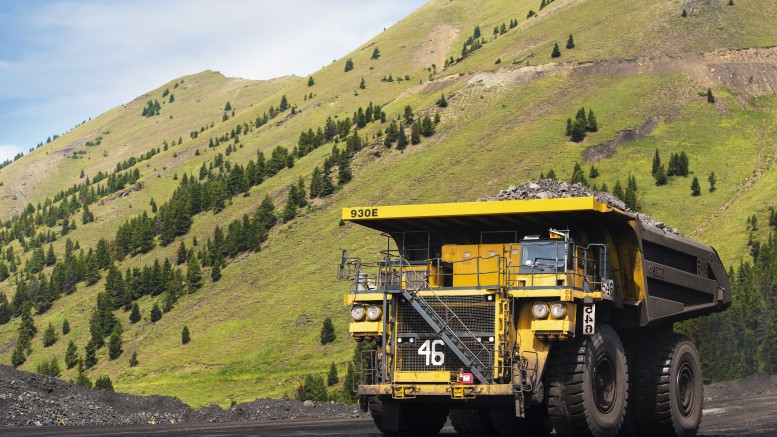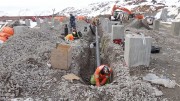VANCOUVER — It’s been a tough run the past few years for people involved with base metals and industrial commodities. Recessions among leading global economies combined with oversupply concerns to drive down spot prices for copper, zinc and metallurgical coal.
Over the past six months, however, the outlook for industrial resources is seemingly improved. Copper has bounced off lows near US$2 per lb., zinc prices have surged to nine-year highs, while metallurgical coal has staged a short-term recovery.
The Northern Miner has compiled reports from major Canadian mining analysts to outline sentiment on industrial markets heading into the New Year.
Copper
The red metal turned a corner in October when sentiment shifted on the Chinese economy. Wood Mackenzie reported that an increase in demand in China was “better than expected,” with growth projected at 4% year-on-year. Over the past two months London Metal Exchange copper inventories have dropped 31% — or more than 110,000 tonnes — while Shanghai Futures Exchange copper stocks dropped 7.5%, or 9,000 tonnes.
Copper prices hit US$2.70 per lb. on Nov. 11, and though the rally has curtailed slightly, it is still up 20% since October to US$2.62 per lb. at press time. The rally is underpinned by Donald J. Trump’s U.S. election win, and his pledge to boost infrastructure spending.
TD Securities analysts Greg Barnes and Craig Hutchison wrote of copper prices on Nov. 18 that “part of the move is based on fundamentals, part is speculation and part is driven by copper playing catch up, after lagging versus other commodities year-to-date.” TD Research observed that “most of the larger new supply sources are now at — or close to —full run rates,” and added that while copper mine supply increased 4% year-on-year in 2016, it could grow just 1% in 2017.

A pit at Turquoise Hill Resources’ Oyu Tolgoi copper-gold project in Mongolia. Credit: Turquoise Hill Resources.
“The move higher appears to be excessive, and we would expect some retracement, as the positive ‘Trump effect’ starts to lose steam and investors ponder the potential negative Trump effect of restrictive trade policies and a stronger dollar,” Barnes and Hutchinson said.
TD Research forecasts a flat copper price deck over the next four years, peaking at US$2.75 per lb. in 2019, before the red metal breaks US$3 per lb. in 2020. Wood Mackenzie projects that the incentive price for mine development (assuming a 12% internal rate of return for new projects) is US$3.10 per lb.

Mining activity at Taseko Mines’ 75%-owned Gibraltar copper mine in south-central British Columbia. Credit: Taseko Mines.
Barnes and Hutchison’s picks for copper leverage among larger Canadian producers include Turquoise Hill Resources (TSX: TRQ; NYSE: TRQ) and Lundin Mining (TSX: LUN; US-OTC: LUNMF). TD Research’s top picks for smaller producer leverage are Copper Mountain Mining (TSX: CMMC; US-OTC: CPPMF) and Taseko Mines (TSX: TKO; NYSE-MKT: TGB).
Zinc
Zinc prices hit a US$1.30 per lb. high in November, which equates to 73% gains year-on-year. Spot prices sat at US$1.22 per lb. at press time, which is the highest point for the metal since 2007 when it briefly popped above US$2 per lb. Scotiabank’s analyst team noted on Nov. 28 that “zinc continues to be our preferred exposure … the metal has the best near- to medium-term fundamentals within the base metals complex.” Scotiabank research models net refined zinc deficits of 600,000 tonnes in 2016, 489,000 tonnes in 2017 and 359,000 tonnes in 2018.
“While 2016 represents the fifth consecutive year of market deficits, we are finally seeing a meaningful price response, as inventory levels have retrenched to what is considered to be the cusp of relatively tight levels,” Scotiabank’s analyst team added.

A loaded truck on the move at Glencore’s George Fisher zinc mine, part of the company’s Mt. Isa operations north Queensland, Australia. Credit: Glencore.
Visible zinc inventories have reportedly dropped 11% year-to-date, while exchange inventories are down 62% from the “most recent cyclical peak” in early 2007.
“We caution that China is the largest producer [and consumer] of zinc, and a potential supply-side response to materially higher prices could eventually burst the bubble [despite environmental and economic rationalization agendas],” Scotiabank added. The analyst price deck for zinc estimates US$1.15 per lb. in 2017, US$1.20 per lb. in 2018, US$1.25 per lb. in 2019 and $1.30 per lb. in 2020.

An underground development worker at Trevali Mining’s Caribou zinc mine in New Brunswick. Credit: Trevali Mining.
Scotiabank’s recommended companies for zinc exposure include: Hudbay Minerals (TSX: HBM; NYSE: HBM), Lundin Mining (TSX: LUN; US-OTC: LUNMF), Pan American Silver (TSX: PAA: NASDAQ: PAAS) and Trevali Mining (TSX: TV). Analysts caution that “if China is unable to ramp up capacity, the market could tighten,” which would make the rising price assumptions conservative.
Metallurgical/coking coal
BMO Capital Markets calculates that spot met coal prices have increased 237% to above US$300 per tonne over the last six months, owing to policy-driven supply constraints in China and disrupted supply from seaborne producers. The market shock was reportedly “driven by China’s policy-makers restricting coal operations to 276 days per year from 330 days per year to cope with overcapacity and low prices.” China regulators announced that all compliant and safe coal mines would operate at full capacity until the “end of the heating season.”
BMO Research explains why the met coal market could stay tight in early 2017. Mine and mill inventory levels are reportedly at the “lowest levels since 2014,” which could support prices at US$250 per tonne. Ongoing logistical challenges in China and the rainy season in Australia could also help underpin the rally.

A mining truck at Teck’s Coal Mountain mine in southeastern British Columbia. Credit: Teck Resources.
On Nov. 22, BMO Research increased its price forecasts for met coal to an average US$198 per tonne in 2017, and US$130 per tonne in 2018. Analysts expect the market will move back into surplus next year, and forecast 25 million tonnes of “incremental export supply from Australia, Mozambique, Mongolia and North America, which more than offsets an estimated 10 million tonnes in additional supply cuts from China next year.”
BMO analysts say that “China’s steel production, driven by export demand, depends on the growth of global demand,” and estimate that the Asian industrial leader’s steel exports will decline 2 million tonnes next year to 98 million tonnes. Meanwhile, the U.S. and India each represent 6% of global steel demand, and “Europe’s anti-austerity movement could be a welcome boost to steel demand.”
BMO Research adds that Anglo American (US-OTC: NGLOY) is the “biggest beneficiary of higher price forecasts,” with 2017 earnings increasing 19%. South32 (US-OTC: SHTLF) shows the next greatest increase at 17%, while Glencore and Rio Tinto (NYSE: RIO) have the most muted response to higher prices, with 5% and 7% increases. In November Goldman Sachs upgraded Teck Resources (TSX: TCK.B; NYSE: TCK) to a “buy” rating, based on its exposure to coking coal and zinc. Year-to-date the company’s shares are up 644%, or $28.97 per share, to a $33.49 close at press time.






Be the first to comment on "Base metal and bulk commodity forecasts improve heading into 2017"